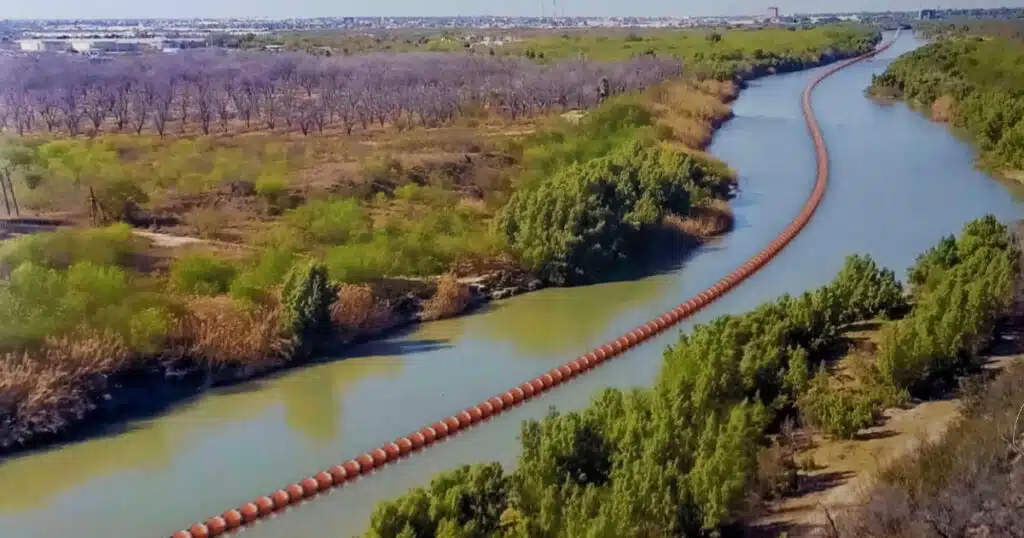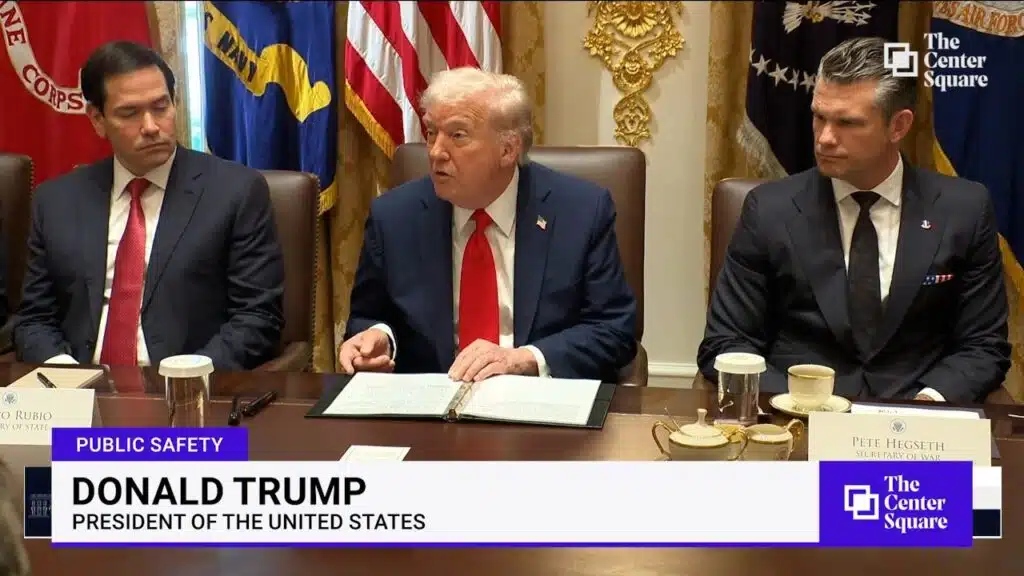
Fifth Circuit hands Texas major win on Rio Grande River buoy lawsuit
One year after Texas installed marine barriers in the Rio Grande River near Eagle Pass, Texas, the U.S. Court of Appeals for the Fifth Circuit ruled Texas has the legal right to do so.
In the 10-7 vote, it also reversed a district court’s preliminary injunction and remanded the case back to the court “with instructions to vacate the preliminary injunction and for further proceedings consistent with this opinion.”
Circuit Judge Don Willett wrote the majority opinion.
Willett made similar arguments as Gov. Greg Abbott had, saying, “the district court clearly erred in finding that the United States will likely prove that the barrier is in a navigable stretch of the Rio Grande. We cannot square the district court’s findings and conclusions with over centuries worth of precedent, which on a fair and faithful reading renders inapplicable or unpersuasive the evidence on which the district court relies.”
Abbott lauded the ruling, saying, “The Federal Court of Appeals for the Fifth Circuit just ruled that Texas can KEEP these buoys in the water securing our border. Biden tried to remove them. I fought to keep them in the water. That is exactly where they will stay. JUSTICE!!!!”
Three judges issued separate opinions concurring with Willett: Chief Judge Priscilla Richman, Andrew Oldham and James Ho.
Circuit Judge James Ho partially concurred and partially dissented, agreeing that the preliminary injunction “must be reversed. But I get to that place through a different path,” he said, adding that he would have instructed the district court to dismiss the case for lack of jurisdiction.
He argued Texas’ right to install the buoys was a constitutional one: a sovereign state has the right to protect its own border. He made similar arguments to those of 55 Texas judges who declared Texas was being invaded.
“A sovereign isn’t a sovereign if it can’t defend itself against invasion,” Ho wrote. “Presidents throughout history have vigorously defended their right to protect the Nation. And the States did not forfeit this sovereign prerogative when they joined the Union. Indeed, the Constitution is even more explicit when it comes to the States. Presidents routinely insist that their power to repel invasion is implied by certain clauses. But Article I, section 10 is explicit that States have the right to ‘engage in War’ if ‘actually invaded,’ ‘without the Consent of Congress.’”
Seven dissenting judges argued the federal government was likely to succeed on the merits of its case, disagreeing with the majority who said it wasn’t.
Circuit Judge Stephen Higginson wrote one dissent. Circuit Judge Dana Douglas wrote another.
The ruling comes after several twists and turns in the case and as extensive misreporting about it continues. Many claimed, and continue to claim, that Texas was ordered to remove the buoys altogether when the district court only ordered they be moved closer to Texas’ riverbank, The Center Square first reported.
Multiple claims were made that the buoys caused migrants to drown, had razors or knives built in and were cutting people. The Center Square debunked them in an exclusive interview with Border Czar Mike Banks, who demonstrated how the buoys work.
“The buoys deter migrants from crossing the river and putting themselves in danger. They’re saving lives, they’re not taking lives,” he told The Center Square.
After Abbott installed the buoys in July 2023, the Biden administration filed a civil complaint, demanding that he remove them. Abbott said he wasn’t removing them and told President Joe Biden he had violated his constitutional oath, was continuing to violate the U.S. Constitution and had broken his compact with the states. Texas has a right to defend its border when the federal government won’t, he argued.
The administration argued Texas installing the buoys violated Section 10 of the Rivers and Harbors Act, which Abbott refuted, saying the statute’s definitions “does not describe any action by the State of Texas.” Willett and the majority agreed.
Within two months of the lawsuit being filed, last September, a federal judge sided with the Biden administration but only ordered Texas to move back, not remove the buoys. “The Court is directing that the buoy barrier be moved from the main waters of the Rio Grande River to the riverbank, rather than removal entirely from the river, so that the barrier does not impede or impair in any way navigation by airboats or other shallow draft craft along the Rio Grande River,” he said.
Within 24 hours of that ruling, the Fifth Circuit unanimously issued a stay, effectively enabling the buoys to remain in place.
Three months later, last December, a Fifth Circuit three-judge panel reversed the stay, siding with the district court. It issued a preliminary injunction requiring Texas to “cease work on the barrier and shift it to the Texas riverbank.” Willett was the sole dissent.
Texas then appealed, asking the full court to hear its case, which it did in January of this year. In Tuesday’s ruling, Willett also ordered that the court’s panel decision be dissolved.
It remains unclear if the Biden administration will appeal to the U.S. Supreme Court since the majority ruled it is unlikely to win on the merits of the case.


